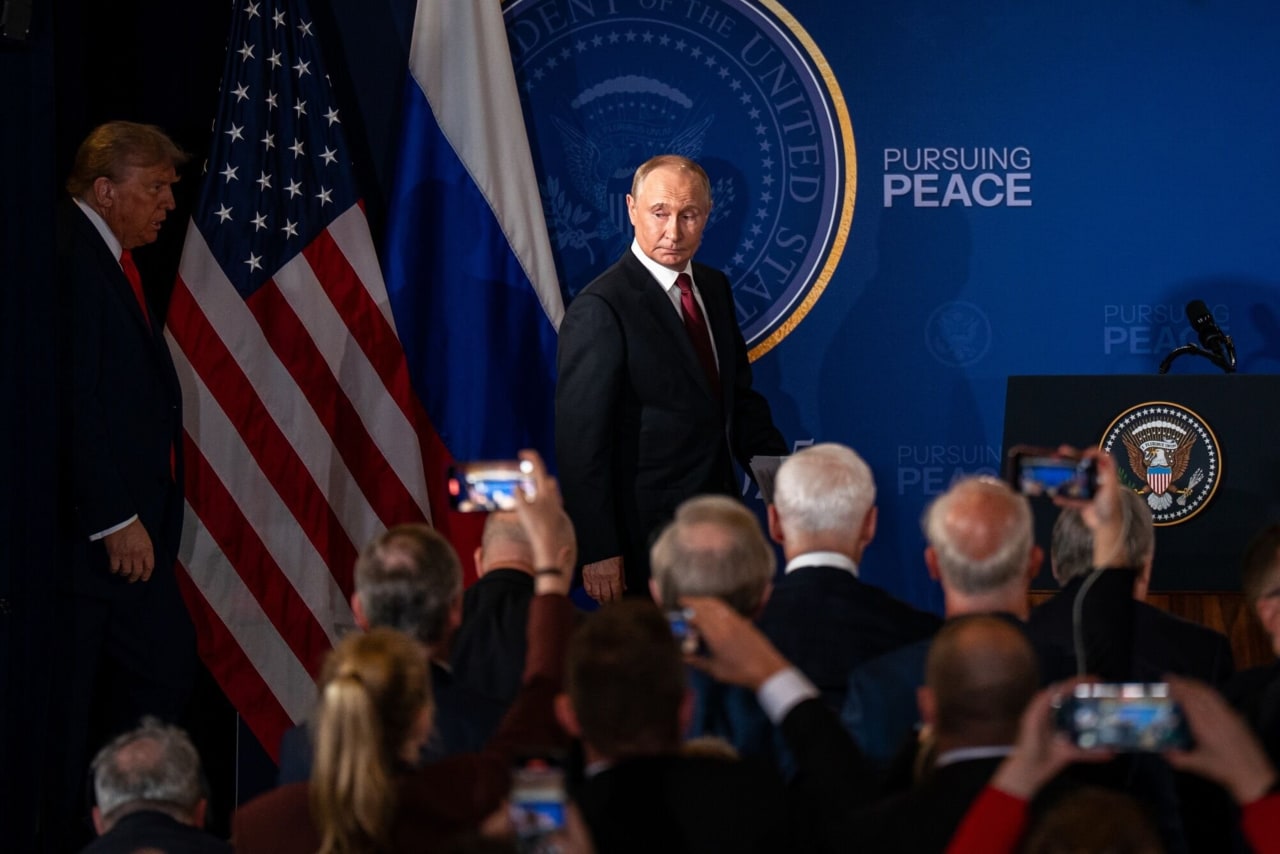Why Trump Reached a Breaking Point With Putin

The U.S. president was given three options for sanctions after running out of patience with the Kremlin over the Ukraine war.
WASHINGTON—President Trump wanted a final gut check before taking his hardest move yet against Russian President Vladimir Putin. “Do you guys agree with me?” he asked top advisers in the Oval Office on Wednesday.

Secretary of State Marco Rubio and Defense Secretary Pete Hegseth said yes, according to a person familiar with the meeting Wednesday afternoon. Hours earlier Trump had met with Treasury Secretary Scott Bessent and told him to prepare a slate of sanctions on Russia’s oil industry, marking the first direct U.S. measures on Russia during the second Trump administration.
“I just felt it was time. We waited a long time,” Trump later told reporters.
For months Trump has been threatening such action, only to allow each threat to fade, as he continued to believe he could negotiate with Putin over the war in Ukraine, a posture that has frustrated policymakers in the U.S. and Europe.
But the president’s patience finally ran out, officials said, after concluding Putin was dragging him along and after continuing to see footage of Russian strikes in Ukraine. Hours after Trump called off a planned summit with Putin in Budapest, deeming it a waste of time, Russia launched new missile and drone strikes on Ukraine, hitting various buildings including a kindergarten. Ukrainian President Volodymyr Zelensky said the attack showed Russia hadn’t come under enough outside pressure to negotiate.
Trump didn’t comment directly on the strikes but has been angered by such aggressions, even at times in which he has felt he has made progress with Putin, administration officials said. Trump thinks the Gaza cease-fire he brokered has created momentum to end the war in Ukraine, officials said, but Putin’s stubbornness has persisted.
“Every time I speak with Vladimir, I have good conversations and then they don’t go anywhere,” Trump said Wednesday.

U.S. sanctions packages for Russia’s oil industry have been drafted and ready for months in case Trump decided to act, U.S. officials said. Trump was presented with three sanctions plans, the officials said: A severe option that targeted Russian industry and senior Russian leaders directly; a middle option that targeted Russia’s energy industry; and a lighter option that included more limited sanctions. Trump chose the middle option.
A senior White House official said Trump has been clear that it is time to end the war, adding that he would continue to seek a peaceful resolution to the conflict.
The new sanctions, which specifically target energy companies Lukoil and Rosneft, represent the latest in Trump’s efforts to end the Russia-Ukraine war and cement his long-sought legacy as a global peacemaker. Trump on the presidential campaign trail last year repeatedly boasted he would end the war on “day one” in office, but peace so far has eluded him, after months of failed efforts to get Moscow to seriously negotiate terms. At times he has sought to pressure Zelensky to make concessions, leading to both public and private arguments.
Rubio said sanctions haven’t changed their overarching goal of pushing Moscow to the negotiating table. “We’d still like to meet with the Russians,” the secretary of state told reporters on Wednesday night. “The president has said repeatedly for months that at some point he’d have to do something if we didn’t make progress on the peace deal. Today was the day he decided to do something.”
The crack with Putin began to emerge publicly in June during the North Atlantic Treaty Organization summit, when Trump called his Russian counterpart’s refusal to end the war “misguided.” A phone call between them the following month was much shorter than previous chats and lacked the warmth with which they normally spoke to each other, the senior administration official said.
Trump has other tools at his disposal to ratchet up pressure on Putin, but so far hasn’t taken them. That includes sending long-range Tomahawk cruise missiles to Ukraine, imposing new secondary sanctions on any companies that do business with the sanctioned Russian oil giants, or targeting Russia’s vast so-called shadow fleet of illicit oil tankers with new sanctions to bolster European Union sanctions.
“Trump is leaving some things off the table because he still really wants a deal with Putin,” said Kurt Volker, who served as Trump’s envoy for Ukraine during his first administration. “This shows he’s just frustrated Putin hasn’t gone along with his plans yet.”
Volker said getting Putin to commit to serious concessions will take “a lot more than sanctions,” and that sending Tomahawks to Ukraine would be an important next step.
Still, the latest Rosneft and Lukoil sanctions could amount to an economic game-changer, administration officials said, given how reliant Russia’s fragile wartime economy is on oil and gas revenue. Within a day of the announcement, Indian oil refiners had taken steps to cut their country’s oil flows from Russia while Chinese state oil companies had suspended, at least temporarily, the purchase of Russian oil.
Putin conceded the sanctions could cost Russia’s economy, telling reporters on Thursday that “some losses are expected,” but he added that “no self-respecting country ever does anything under pressure.”
Trump hasn’t yet signaled whether he would follow up with additional U.S. sanctions on Russia as he increases pressure on Putin to get a peace deal.
“Now the question is whether we’re seeing a fundamental retooling of Trump’s strategy or just a temporary measure to show displeasure with the fact the Russians have been totally not cooperative on the diplomatic front,” said Andrew Weiss, vice president for studies at the Carnegie Endowment for International Peace think tank.
Write to Alex Leary at alex.leary@wsj.com, Robbie Gramer at robbie.gramer@wsj.com and Alexander Ward at alex.ward@wsj.com
One Subscription.
Get 360° coverage—from daily headlines
to 100 year archives.



HT App & Website






